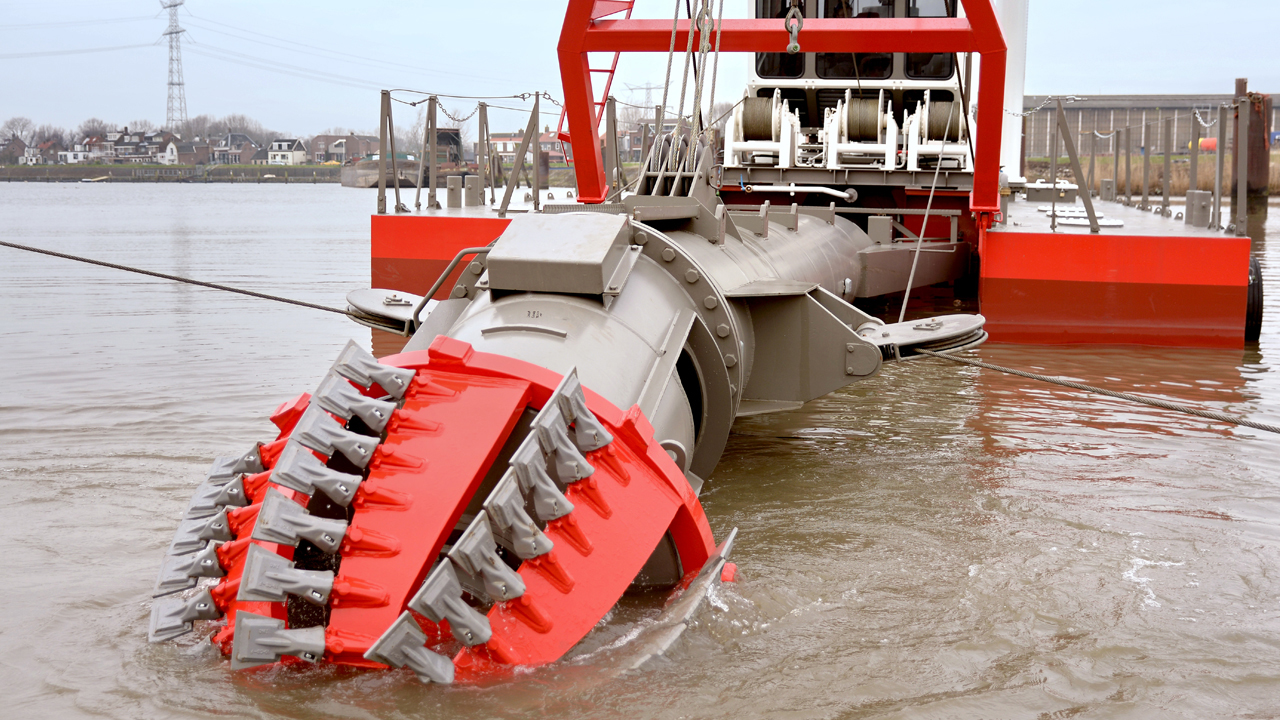Swing Winches:
Dredging is a crucial activity in marine construction, port maintenance, and coastal protection. Among the various types of dredges, cutter dredges and trailing suction hopper dredges (TSHDs) are widely used for their efficiency and versatility. Understanding the mechanisms and modeling of their swing winches is essential for efficient dredging operations.
Swing winches play a pivotal role in the maneuverability of cutter dredges and TSHDs. They control the swing motion of the dredge arm or draghead, allowing precise positioning and efficient excavation.
Modeling the Swing Winches of a Cutter Dredge:
- Mechanical Components:
- Cutter dredges are equipped with a rotating cutter head attached to a swing winch.
- The swing winch consists of a motor, gearbox, drum, and control system.
- The motor provides the necessary power to drive the winch.
- The gearbox ensures torque multiplication and speed control.
- The drum winds and unwinds the cable connected to the cutter head.
- A sophisticated control system regulates the speed and direction of the winch, enabling precise maneuvering of the cutter head.
- Mathematical Modeling:
- Mathematical models of cutter dredge swing winches involve equations that govern the motion of the winch, considering factors such as cable tension, drum diameter, and motor torque.
- Differential equations are used to describe the dynamic behavior of the winch system.
- Parameters such as cable elasticity, drag forces, and environmental conditions (e.g., currents) are incorporated into the model to enhance accuracy.
- Simulation software like MATLAB/Simulink or specialized dredge simulation tools can be employed to analyze and optimize the performance of cutter dredge swing winches.
- Simulation and Control:
- Simulation allows engineers to predict the behavior of the cutter dredge under different operating conditions.
- Control algorithms are developed to ensure stable and responsive operation of the swing winch.
- Proportional-Integral-Derivative (PID) controllers are commonly used to regulate winch speed and position.
- Advanced control strategies, such as model predictive control, may be implemented to account for nonlinearities and disturbances in the dredging process.
Modeling the Swing Winches of a Trailing Suction Hopper Dredge:
- Functionality:
- TSHDs employ a suction dredge head or draghead connected to a swing winch for excavation.
- The swing winch controls the lateral movement of the draghead, allowing efficient coverage of the dredging area.
- Design and Components:
- Similar to cutter dredges, TSHDs’ swing winches consist of motors, gearboxes, drums, and control systems.
- However, the design may vary based on the specific requirements of suction dredging.
- TSHD swing winches are designed to handle high suction forces generated during dredging operations.
- Modeling and Simulation:
- Mathematical models of TSHD swing winches focus on simulating the dynamic behavior of the dredge head and the response of the winch system.
- Parameters such as suction force, sediment characteristics, and vessel dynamics are integrated into the model.
- Simulation allows engineers to assess the performance of TSHD swing winches under different soil conditions and operating scenarios.
- Control and Optimization:
- Control strategies for TSHD swing winches aim to maintain stable suction operation and optimize dredging efficiency.
- Feedback control systems adjust winch speed and position based on sensor measurements and dredging conditions.
- Real-time monitoring and adaptive control algorithms enhance the responsiveness and accuracy of TSHD swing winches during dredging operations.
Modeling the swing winches of cutter dredges and TSHDs is vital for optimizing dredging efficiency, maneuverability, and control. By employing mathematical modeling, simulation, and advanced control techniques, engineers can enhance the performance of these essential components, leading to more effective and sustainable dredging operations in various marine environments.
